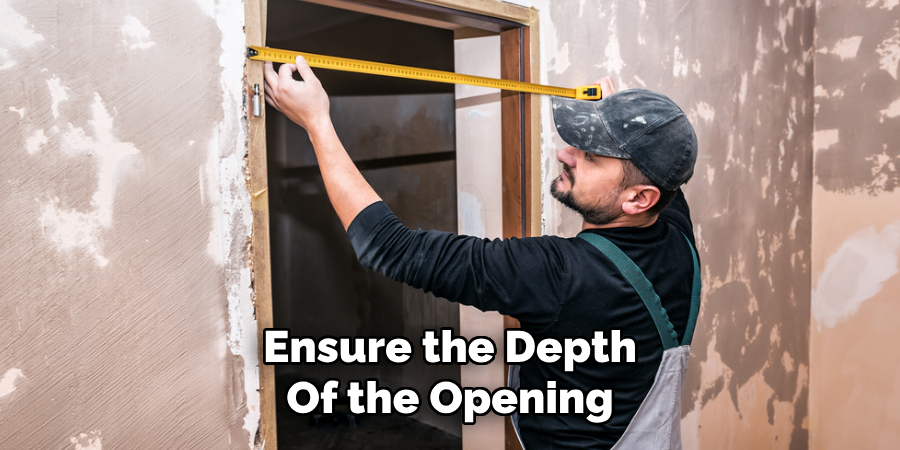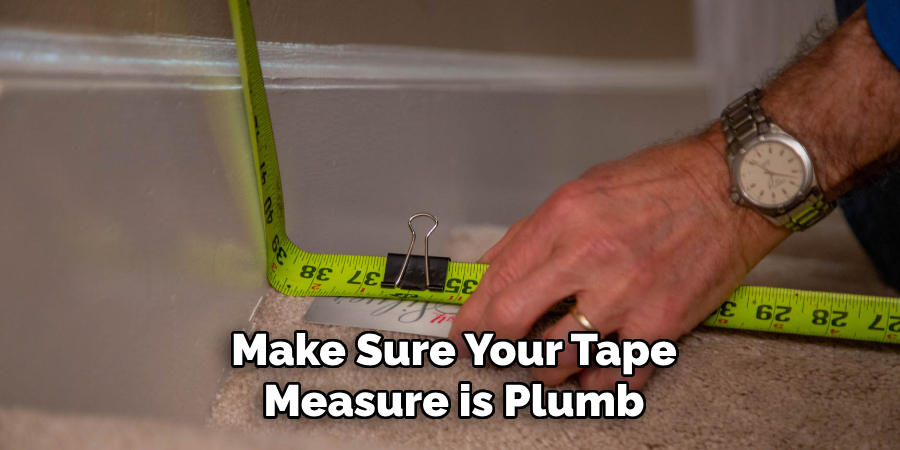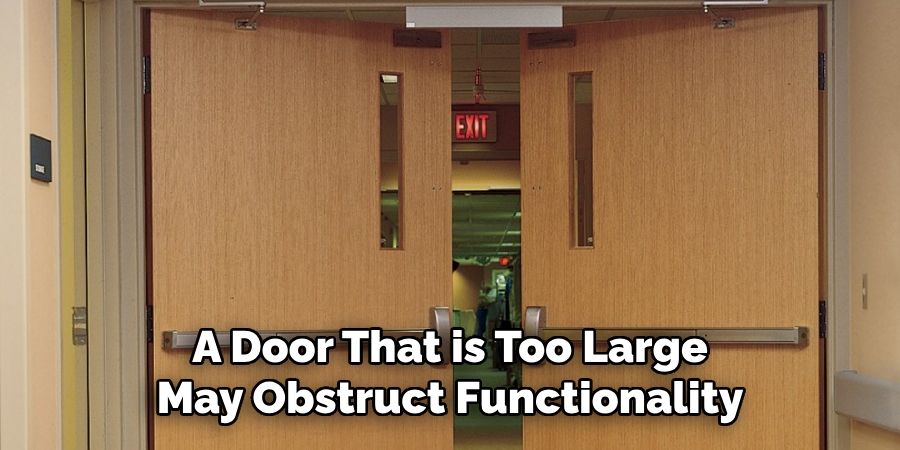The significance of accurate measurements cannot be overstated when installing closet doors. Proper fit is essential not only for aesthetic appeal but also for the functionality of the doors. Various types of closet doors, including bifold, sliding, and hinged, each require specific measurements and considerations to ensure they operate efficiently within the space provided.

The process of measuring a closet door involves carefully assessing the closet opening’s width, height, and depth, as well as accounting for any additional hardware or trim that may affect the fit. By following the correct steps on how to measure for a closet door, homeowners can achieve a seamless and professional-looking installation, ultimately enhancing their storage solutions and overall room design.
Types of Closet Doors and Their Measurement Requirements
Bifold Doors
Bifold doors are an excellent choice for closets where space is at a premium. These doors consist of two or more panels that fold open, providing full access without requiring additional room for swing. When measuring bifold doors, it is crucial to consider the width and height of the opening, ensuring that the panels can fold without obstruction.
Measure the overall width, including the track allowance, and record the height at the left, center, and right sides of the opening. Additionally, ensure the clearance above the door frame accommodates the top track.
Sliding Doors
Sliding doors offer a sleek and modern solution for closet spaces. They operate on a track system, allowing doors to glide smoothly without encroaching into the room. When measuring for sliding doors, focus on the width of the opening, accounting for the door panels’ combined width plus some extra space for the tracks. Height is measured similarly, but it’s essential to leave adequate room for the top track installation. Additionally, ensure the depth of the opening allows for track clearance and any necessary door hardware.

Hinged Doors
Hinged doors, available in single or double configurations, provide a classic appeal and are easy to operate. When measuring for hinged doors, measure the width and height of the opening thoroughly, and don’t forget to account for the space required by the hinges and any knobs or handles. Ensure that the measurements allow easy operation without surrounding walls or furniture interference.
Tools and Materials Needed
Measurement Tools
To ensure accurate measurements for your closet door installation, you’ll need a tape measure, level, pencil, and notepad. The tape measure allows for precise width, height, and depth measurements, while the level helps confirm that surfaces are even, preventing operational issues for the door.
The pencil is necessary for marking measurements, and the notepad is crucial for recording data to avoid confusion during installation. Having accurate tools can significantly impact the quality of your project.

Materials
Have the necessary materials, such as door specifications and trim details, to facilitate a smooth installation process. Reviewing these details can help prevent errors in selecting the appropriate door size and style.
Additionally, it’s advisable to enlist the help of a second person when dealing with larger doors, as this will make handling and positioning easier, ensuring a safer and more efficient installation.
How to Measure for A Closet Door: Measuring the Closet Opening
Accurate measurements of the closet opening are crucial for selecting and installing the right closet doors. The process involves measuring the width, height, and depth of the opening to ensure a proper fit. Here, we will break down the steps for each measurement.
1.Width Measurement
To measure the width of the closet opening, start by taking three measurements: at the top, middle, and bottom of the opening. Use a tape measure to record the width at each point, ensuring the tape remains straight and level. Take care to measure from wall to wall, accounting for any irregularities present. After obtaining these three measurements, record the narrowest width.
This approach is important because variations can occur due to uneven walls or framing shifts, and using the smallest measurement ensures satisfaction with the door’s fit. It is advisable to write down the measurement immediately to avoid confusion later. By prioritizing the narrowest measurement, you are taking a proactive step in achieving a polished and functional installation that prevents any door operation or alignment issues.
2.Height Measurement
Measuring the height of the closet opening follows a similar three-point strategy. Begin by measuring the height on the left side, then at the center, and finally on the right side of the opening. Make sure your tape measure is plumb, and record each measurement to the bottom of the opening, ideally up to the floor or any baseboard.

It’s essential to note the shortest of the three measurements as the accurate height for your closet door to ensure a perfect fit. In instances where the closet opening is irregular or out of square, the shortest measurement will guarantee that your door does not rub against any surfaces during use. This kind of meticulous attention to height will also contribute to better overall aesthetic alignment with adjacent trim and walls.
3.Depth Measurement
The depth of the closet opening is particularly important when planning for sliding doors, as it must accommodate the door tracks and any additional hardware. To measure the depth, simply use your tape measure to gauge the space from the front edge of the closet opening to the back wall. Ensure you account for any items that may be positioned in the closet, as they could interfere with track installation.
It’s also important to allow for a few extra inches beyond the thickness of the door and the track system itself, ensuring smooth operation and clearance for the door panels when they are opened and closed. Effective depth measurement not only ensures a proper configuration for sliding doors but also contributes to the longevity of the installation by preventing wear caused by tight fits. Always document your measurements to facilitate ease of reference during the door selection and installation phases.
How to Measure for A Closet Door: Accounting for Door Hardware and Trim
When installing closet doors, accounting for the necessary door hardware and trim ensures a seamless and functional installation. This means acknowledging the space required for both the top and bottom tracks of sliding doors and the hinges and doorknobs for hinged doors. Skipping this step can lead to misalignments and operational issues.
Clearances must be included in the height measurements for sliding doors to accommodate the top track, which typically requires a bit more space than the door itself. Equally, the bottom track should have adequate room so that the door can glide effortlessly without obstruction. For hinged doors, it’s crucial to account for the space needed when the door swings open. Proper planning ensures that the door hardware will operate smoothly and be easily accessible.
1.Clearances for Door Tracks
Special attention must be paid to the clearances around the top and bottom tracks if you opt for sliding doors. Adjust measurements to allow for the installation of these tracks, as failing to do so may result in doors that do not open or close properly. Ensure you calculate additional height for the top track’s mounting and provide sufficient space for the bottom track without interfering with the closet’s interior decor.

2.Space for Hinges and Knobs
Hinged doors require careful consideration of where hinges and doorknobs will be positioned. When measuring for hinged doors, ensure there’s enough space in the opening to accommodate the hinges’ projection and the knob or handle placement. This is essential for functionality and aesthetic appeal, as all hardware must fit within the confines of your existing measurements without compromising the door’s operation or the closet’s usability.
Adjustments and Final Checks
Double-Checking Measurements
Before finalizing your closet door selection or making any cuts, verifying your measurements is imperative to avoid costly mistakes. Double-checking ensures accuracy and allows you to catch any discrepancies that may have occurred during the initial measuring process.
Use a tape measure to re-measure critical points—width, height, and depth—especially where irregularities are noted. Pay special attention to the narrowest width and shortest height, as these will dictate the size of the doors you need. Keeping a clear record of these revised measurements can aid in smoother purchases and installations.
Making Adjustments
Adjustments may be necessary to achieve a proper fit in cases where the closet opening is out of square. Measure the diagonals of the opening; if they aren’t equal, it indicates a need to account for this discrepancy in your measurements. To ensure consistent spacing and alignment, use shims when installing the door frame or track—as this will provide the necessary adjustments to maintain even gaps and proper door operation. By addressing these factors proactively, you can achieve a professional-looking installation that functions effectively.
Selecting the Right Door Size
Choosing the correct door size is crucial for a successful installation. Start by consulting the manufacturer’s size charts and recommendations, as these often detail the optimal door dimensions based on standard closet opening measurements. This step will guide you in selecting a door that fits well and complements your space’s overall design. It’s essential to strike a good balance between the door size and the closet opening dimensions; selecting a door that is too large may obstruct functionality, while a door that is too small can lead to gaps that compromise aesthetics and usability.

Once you have gathered your measurements and manufacturer guidelines, you can confidently select the door that best suits your needs, ensuring a seamless integration into your closet space. Remember to factor in any hardware requirements as well, as they can influence the final dimensions needed for a successful fit.
Conclusion
In conclusion, understanding how to measure for a closet door is an essential step in achieving a successful installation. Accurate measurements ensure that the door will fit properly within the opening, avoiding potential issues such as misalignment or operational difficulties down the line.
Taking the time to measure precisely, considering all aspects like hardware and track requirements, will lead to a smoother installation process. The satisfaction of having a well-fitted closet door not only enhances the functionality of your space but also contributes to its overall aesthetic appeal. By prioritizing careful measurements and thoughtful selection, you’re investing in a solution that will serve you well for years to come. Remember, a little patience in the planning stages can make a significant difference in the outcome of your project.
Check it out to Make a Wooden Hinge
About the Author
Adrian Green, a lifelong woodworking enthusiast, shares his passion for the craft through The Woodenify Blog. With a foundation built on years of hands-on experience in his father’s woodworking shop, Adrian is dedicated to helping others learn and grow in the world of DIY woodworking. His approach to woodworking combines creativity, practicality, and a deep appreciation for the art of building with your own hands. Through his blog, he inspires individuals of all skill levels to embark on their own woodworking journeys, creating beautiful, functional pieces of furniture and décor.
Professional Focus
- Specializes in DIY woodworking projects, from furniture to home décor.
- Provides step-by-step guides and practical tutorials for woodworkers of all skill levels.
- Dedicated to helping readers build confidence and skill through easy-to-follow instructions and tips.
- Passionate about fostering a community of makers who can share, learn, and grow together.
Education History
- University of Craft and Design – Bachelor of Fine Arts (BFA) in Woodworking and Furniture Design
- Woodworking Apprenticeships – Extensive hands-on training with skilled craftsmen to refine carpentry and furniture making techniques.
- Online Courses & Masterclasses – Continued education in advanced woodworking techniques, design principles, and specialized tools
Expertise:
- DIY woodworking, carpentry, furniture making, and home décor projects.
- Creating accessible tutorials and guides for beginner to advanced woodworkers.
- Sharing the joys and satisfaction of woodworking, from raw materials to finished products.
